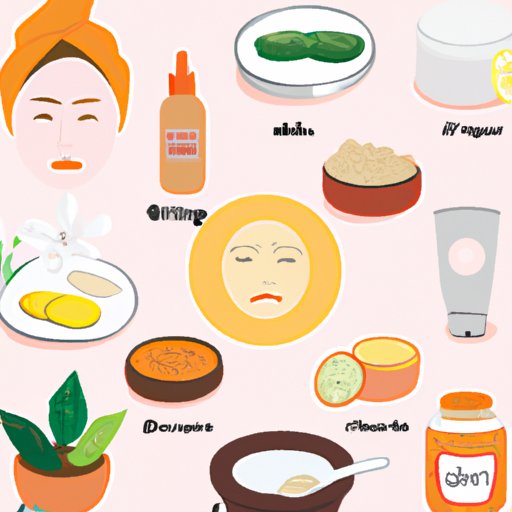Introduction
Acne is a common skin condition that affects people of all ages, causing redness and inflammation. It occurs when there is an overproduction of oil in the sebaceous glands, which leads to clogged pores and the development of lesions on the skin. Redness from acne can be embarrassing and uncomfortable, but luckily, there are ways to reduce it.
Causes of Redness from Acne
There are several causes of redness from acne, including:
Dirt and Oil Buildup
When dirt and oil build up on the skin, they can cause redness and irritation. This buildup can occur when skin isn’t washed properly or often enough, leading to clogged pores and the development of lesions.
Touching or Scrubbing Skin Too Much
The skin is very sensitive and should not be touched or scrubbed too much. Excessive touching or scrubbing can irritate the skin and lead to further redness and inflammation.

How to Reduce Redness from Acne
Fortunately, there are several ways to reduce redness from acne. Here are some tips:
Gentle Cleanser Twice Daily
Using a gentle cleanser twice daily can help remove dirt, oil, and other debris from the skin. Look for cleansers that are non-comedogenic, meaning they won’t clog pores. Avoid harsh cleansers or scrubs, as these can cause further irritation.
Cold Compress or Ice Cube
Applying a cold compress or ice cube to the affected area can help reduce redness and inflammation. Do this for no more than 10 minutes at a time, as extended exposure to cold can cause damage to the skin.
Topical Creams or Gels
There are many topical creams and gels available that can help reduce redness from acne. These products typically contain ingredients like benzoyl peroxide or salicylic acid, which help to exfoliate and unclog pores. Be sure to read the directions carefully and use as directed.
Oral Anti-Inflammatory Medication
In some cases, oral anti-inflammatory medication may be prescribed by a doctor to help reduce redness from acne. These medications can be taken orally or applied topically, depending on the severity of the acne.
Sunscreen with SPF 30
It’s important to protect the skin from the sun’s harmful UV rays. Use a sunscreen with SPF 30 or higher whenever you’re outside, and reapply every two hours. This will help prevent further redness and irritation.
Natural Remedies
There are also several natural remedies that can help reduce redness from acne. Some of these include aloe vera gel, witch hazel, tea tree oil, and honey. Before using any of these remedies, be sure to do a patch test to make sure they won’t irritate your skin.
Conclusion
Redness from acne can be embarrassing and uncomfortable, but there are ways to reduce it. Try using a gentle cleanser twice daily, applying a cold compress or ice cube, using topical creams or gels, taking oral anti-inflammatory medication, wearing sunscreen with SPF 30, or trying natural remedies. With patience and consistency, you should be able to reduce redness and improve your skin’s appearance.
Summary of Tips for Reducing Redness from Acne
- Use a gentle cleanser twice daily
- Apply a cold compress or ice cube
- Try topical creams or gels
- Take oral anti-inflammatory medication (if prescribed)
- Wear sunscreen with SPF 30
- Try natural remedies
Final Thoughts
Reducing redness from acne takes time and patience, but it can be done. If you follow the tips outlined above and maintain a consistent skin care routine, you should see results in no time. Don’t forget to wear sunscreen and take other steps to protect your skin from the sun’s harmful rays.


